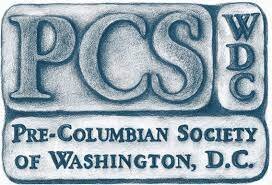Thinking Outside—and Inside—the “Tortuguero Box”: On the Road with the Miniature Classic Maya Wooden Coffer, John B. Carlson, PhD, Center for Archaeoastronomy and University of Maryland
THE SUMNER SCHOOL IS OPEN. TONIGHT’S MEETING WILL BE HELD AS SCHEDULED
This meeting will be held at the Charles Sumner School, 17th & M Streets, N.W., Washington, D.C. NOTE: Photo ID is required to enter the building.
The meeting starts with refreshments at 6:45 pm and the lecture begins at 7:15 pm.
(c) Justin Kerr 339d with permission.
A remarkable survivor from the Classic Maya culture of ancient Mexico is a miniature lidded hardwood coffer with a substantial carved glyphic text and intriguing imagery. Known universally as the “Tortuguero Box,” it was allegedly found in the 1960’s by looters in a dry cave cache near the Chiapas – Tabasco border not far from the Maya site of Tortuguero. This and other reputedly associated perishable artifacts that survived the humid conditions are known as the “Grolier Cache”, due to its most important member, the oldest known pre-Hispanic book, the “Códice Maya de México”, formerly known as the Grolier Codex.
The aristocratic owner of the Box, Aj K’ax B’ahlam, is pictured on the lid, holding a staff in his right hand and probably the Box itself in his left. He is depicted as a nobleman, perhaps preparing to embark on a journey. The dedication date, 14 Oct 681 CE, records his investiture under the Tortuguero ruler into a royal “Bird Head” office whose exact nature has remained enigmatic. Now in the Jay I. Kislak Collection of the Library of Congress, the Box still holds a small greenstone figurine, reportedly found inside according to Mayanist Michael Coe (1974).
This multidisciplinary presentation explores the history and purpose of the Tortuguero Box and other related artifacts. What were such miniature coffers used for, were they taken on a journey or not, and can we know their original and perhaps repurposed contents? The “Bird Head” office and the elite status and functions of the officeholder are also explored.
John B. Carlson, an astronomer by training, is the Director of the Center for Archaeoastronomy, a non-profit institute for research and education related to inter-disciplinary studies of the astronomical practices, celestial lore, religions, and world-views of ancient civilizations and contemporary indigenous cultures of the world. Dr. Carlson is an expert on Native American astronomy, specializing in studies of Pre-Columbian Mesoamerica, and is Editor-in-Chief of the ARCHAEOASTRONOMY Journal. The art, iconography, calendar systems, and hieroglyphic writing of the Maya and Highland Mexican civilizations are particular interests, and the “archaeology of pilgrimage” is a current special research focus. In 2005 and 2006, Carlson was the Kislak Fellow in American Studies at the John W. Kluge Center for Scholarly Research at the U. S. Library of Congress where he completed a long-term comprehensive study of “Maya Flasks and Miniature Vessels.” One current continuing research project is the “Códice Maya de México”, formerly known as the Grolier Codex, and the other perishable artifacts—including the Tortuguero Box—allegedly found with it. Dr. Carlson is Senior Lecturer in the University Honors College, University of Maryland - College Park, where he teaches courses in Astronomy, Anthropology, History of Science and Apocalypticism.


